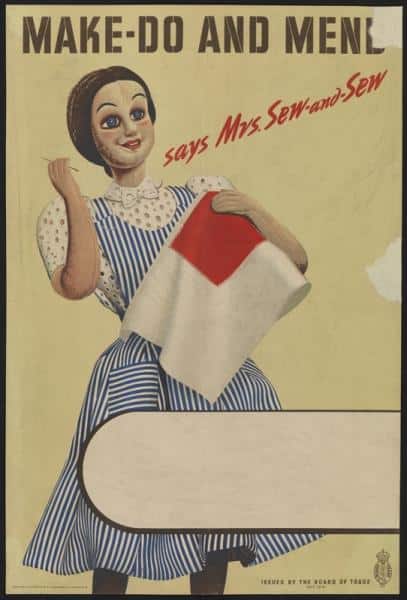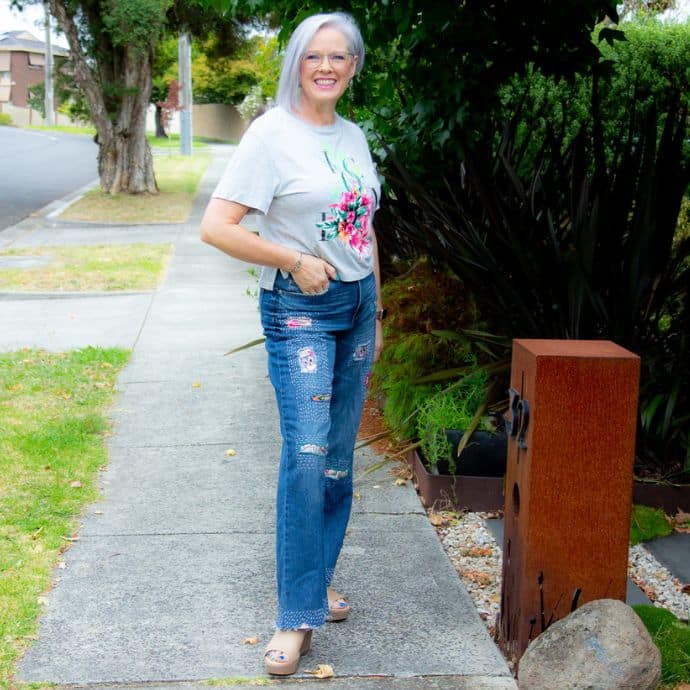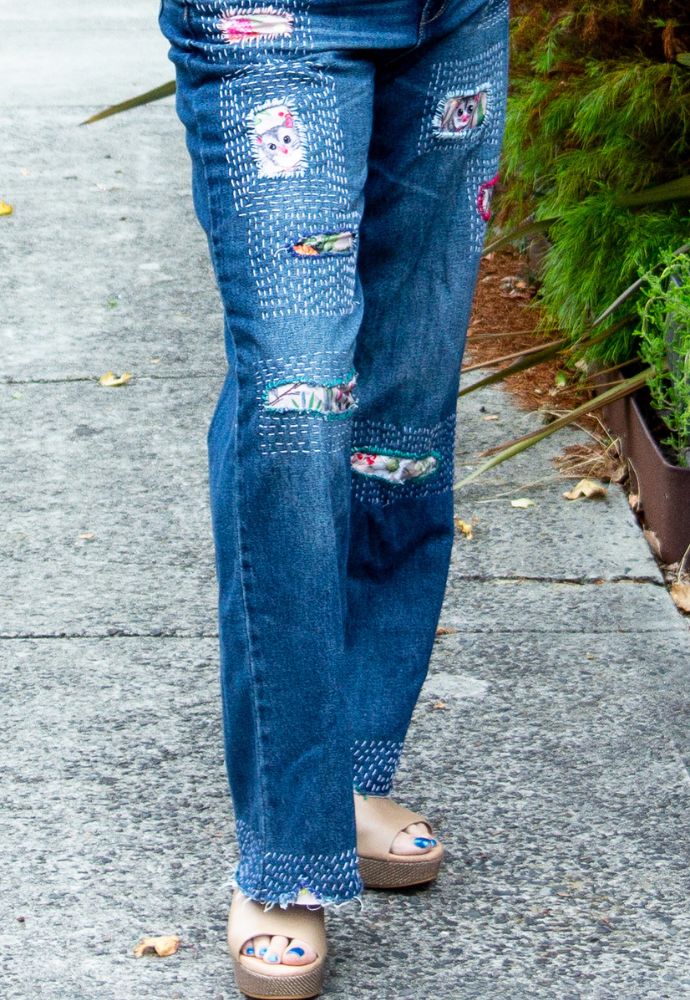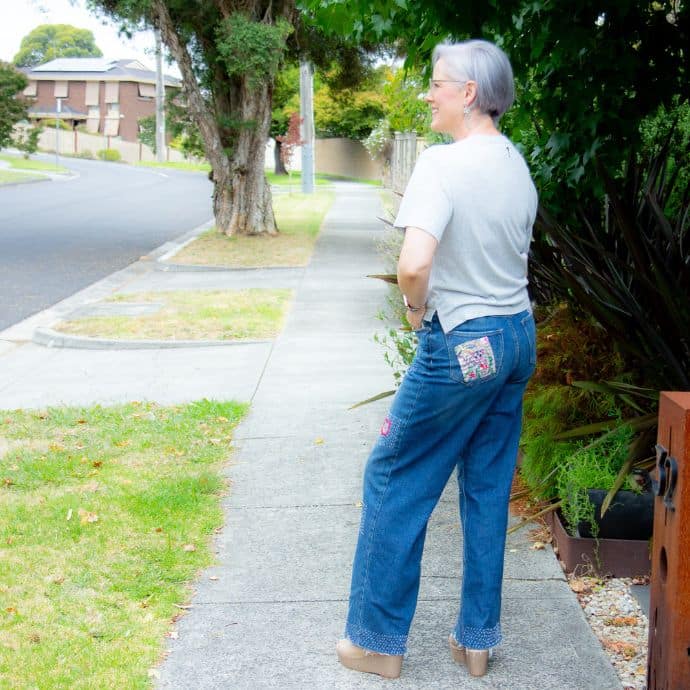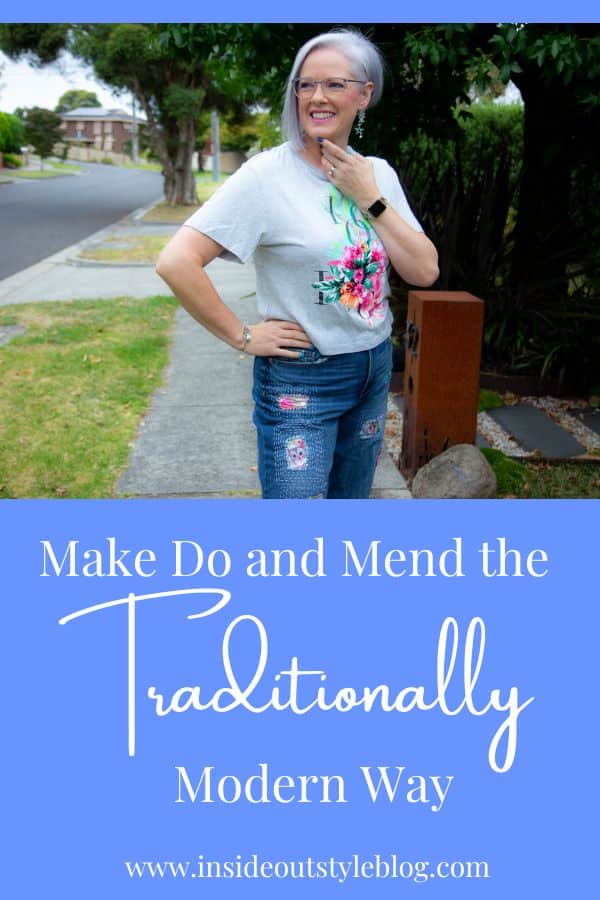[ad_1]
make and fix It was a phrase I heard a lot from my grandmother, who was born in 1903 and who had gone through two world wars as well as the Great Depression, and even from my family who were babies in their late 30s and whose formative years were in the Second World. War. The UK Government came up with this slogan with rationing meaning that many things are difficult (or impossible) to buy. Women became smart and dexterous, they made wedding dresses from abandoned parachutes.
I think there is a little resurgence in this idea as we begin to realize that we are killing our beautiful planet with industrialized making and disposal. The fashion industry is responsible for around 92 million tons of clothing-related waste, which produces half a million tons of microplastics (very bad for the environment) each year. 15% of the fabric used in production is wasted and 57% of all discarded clothing goes to landfills.
These are some sad and surprising statistics. And I can share more with you about how the average number of times an item was worn decreased by 36%. We buy more clothes each year (seriously like doubling our purchase) but we wear everything less and more ends up in the landfill. It’s not great.
This is just one of the reasons why defining and developing your personal style is something that can actually increase your sustainability because you don’t spend too much buying clothes that don’t work. When you have a color palette that you know suits you, you don’t want to buy off-pallet clothes just because they’re cheap or because you see someone else wearing them. You know what doesn’t work for you, and it gives you the power to say no to the persistent sales assistant. You’ve learned that you want to be more discerning and selective in what you buy because you don’t want to add to that waste and you want to keep your $$$ for great things that you love and will give you. more confidence.
In addition to buying better, there is pressure to reproduce, and I know many women (including me) who dust off their sewing machines because they don’t like what’s sold in stores (I’ve started sewing again because it’s somewhat comfortable skirts in colors and patterns I like, and I haven’t been able to find anything in stores). It wasn’t just the pandemic quarantines that got us sewing again (though it still gave me more time to do creative things).
I spent part of my Christmas vacation watching a cascade Great English Stitch Bee every episode has a Transformation Challenge, and in one episode of season 8, contestants were asked to mend and transform their ripped jeans using Boro and Sashiko’s traditional Japanese mending methods, and I think I fell in love with the idea (just a little bit).
I started researching these traditional ways of repairing slightly broken things (just as the Japanese repair pottery with Kintsugi, where the repaired piece is believed to be both stronger and more beautiful than the original intact piece), I think using Boro and Sashiko to mend the clothing makes the clothing more interesting. and making it beautiful, as well as making it unique by moving from a mass-produced clone of clothing to a new original artisanal product.
boron is to add fabric patches to clothing under the hole, inside or outside, to repair holes.
Sashiko are decorative stitches used to secure holes and hold fabric patches in place.
After Jill Chivers shared it jeans upcycle creations having fun creating. I decided to use these traditional concepts to enhance a ripped pair of jeans (and then add some additional rips that I could mend just for fun).
One of the things I really enjoyed about it was that it was completely hand sewn, no machinery was used. And I realized that I find these types of hand stitches really meditative and relaxing.
And since I have a bag of scraps from various sewing projects over the years, it was easy to find something that would work well. It was the idea of tiny opossum faces peeking through holes that prompted me to choose the fabric I was using.
I decided to add a small patch of opossum to one of the back pockets, although the back pockets were okay.
Using traditional methods and a modern fashion trend (ripped jeans are everywhere, but I prefer my jeans to breathe less), you can create something more beautiful and original with your basic denim products that have seen better days!
That’s why I’m now the proud owner of totally unique jeans that look like nothing else in the world and have saved them and their leftover fabric scraps from ending up in the landfill.
[ad_2]
Source link

